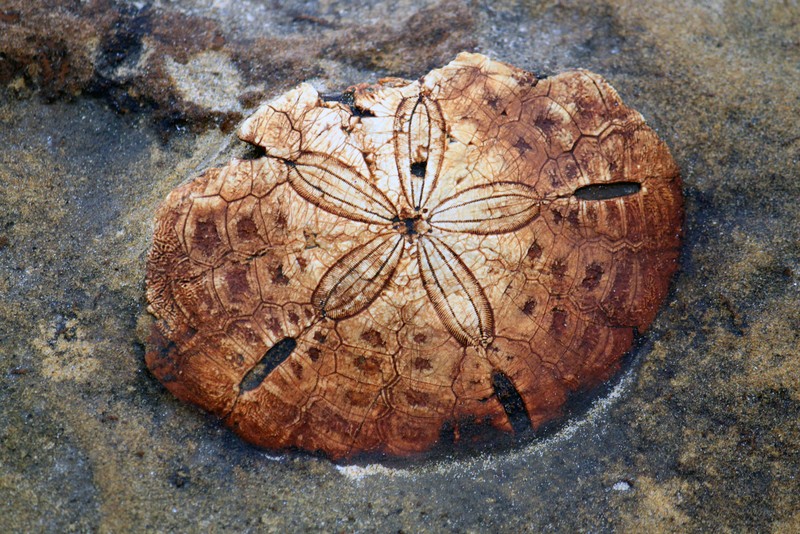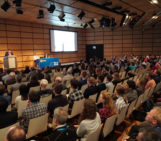This week’s Imaggeo on Mondays stars the humble sea urchin – a creature suffering from the effects of climate change, but one that could also provide a way to sequester some of the CO2 responsible…
Carbon dioxide and water react to form carbonic acid – a mixture of bicarbonate and hydrogen ions. Sea urchins bag the bicarbonate to grow bigger, stronger shells, or ‘tests’, but without a catalyst, this reaction happens fairly slowly. In fact, because the reaction is reversible, the hydrogen ions and bicarbonate can recombine, rendering the bicarbonate unavailable for the urchin. Not ideal.
To help themselves on their way to adulthood, larval urchins use trace nutrients from the water as catalysts for carbonate uptake. Catalysts to molecules are like bars are to people – interaction is much more likely to occur.

This image shows a sea urchin long past the end of its life cycle, but back when it was a little nipper, it was quite an amazing creature! (Credit: Natalia Rudaya, distributed via imaggeo.egu.eu)
By building nickel into their tests, urchins can speed up the conversion of carbon in the water to carbon for growth because the nickel, like any catalyst, provides a site for the reaction to occur.
This fantastic feature of sea urchins is now being mimicked in a pilot process that uses nickel to help capture carbon from the atmosphere and store it as stony sediment.
The application was a chance discovery. Physicist Lidija Šiller, while working on a carbon capture project at Newcastle University, was also investigating how sea urchins convert CO2 to calcium carbonate. “When we analysed the surface of the urchin larvae we found a high concentration of Nickel on their exoskeleton. Taking Nickel nanoparticles which have a large surface area, we added them to our carbonic acid test and the result was the complete removal of CO2,” Šiller explains in a press release for the study.
The carbon capture process used to use an enzyme to speed up the conversion carbon dioxide into calcium carbonate, but the enzyme is only active for a short time and it rapidly fails under acidic conditions. To speed up the process, and prevent enzyme wastage, the scientists took a leaf from the urchin’s book. Nickel nanoparticles can used to catalyse the conversion of atmospheric CO2 into carbonate. What’s more, the nanoparticles are magnetic, so can be removed from the mixture and reused in another round of carbon capture.
While urchins themselves aren’t the key to climate mitigation, the urchin-inspired process has great potential. Watch this space!
By Sara Mynott, EGU Communications Officer
Reference:
Gaurav A. Bhaduri, Lidija Šiller. Nickel nanoparticles catalyse reversible hydration of carbon dioxide for mineralization carbon capture and storage. Catalysis Science & Technology, 3, 1234-1239, 2013.
The EGU’s open access geoscience image repository has a new and improved home at imaggeo.egu.eu! We’ve redesigned the website to give the database a more modern, image-based layout and have implemented a fully responsive page design. This means the new website adapts to the visitor’s screen size and looks good whether you’re using a smartphone, tablet or laptop.
Photos uploaded to Imaggeo are licensed under Creative Commons, meaning they can be used by scientists, the public, and even the press, provided the original author is credited. Further, you can now choose how you would like to licence your work. Users can also connect to Imaggeo through their social media accounts too! Find out more about the relaunch on the EGU website.




